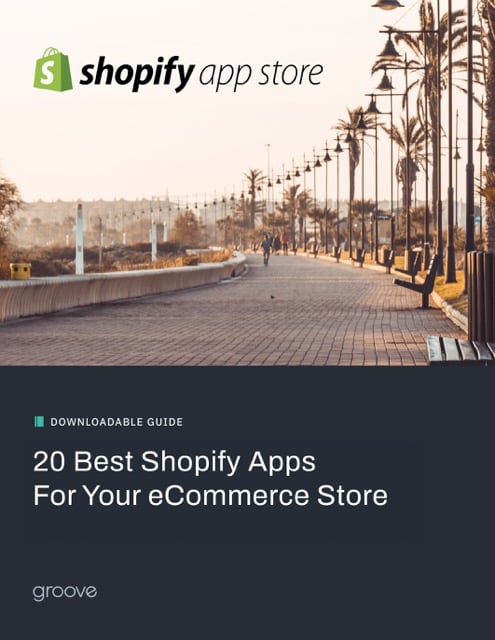Content marketing for online stores is a great way to grow brand awareness and reach new customers. But when you can get existing buyers to create and share their own content about your brand, it's even more powerful.
eCommerce user-generated content is a form of social proof marketing, and it can deliver excellent results for online stores—including more sales, improved customer trust, and boosted SEO. To explore why user-generated content is one of the most powerful eCommerce trust-building strategies, we'll take a deep dive into what UGC for eCommerce actually is and look at the different types of user-generated material that your business can put to use.
What Is User-Generated Content?
User-generated content (UGC) refers to written or multimedia material related to your brand that's created by someone who is not officially affiliated with your business.
Examples of this content include product reviews, social media posts, FAQ forums, and discussion boards. This authentic content directly connects your brand with shoppers. It’s personalized, socially integrated, insightful, and transparent. Best of all, it builds trust with customers. This ultimately translates into business success and scalable growth.
In a crowded eCommerce market, establishing third-party credibility is key to developing consumer trust. Brands that employ user-generated content demonstrate authenticity and typically elicit more positive responses from potential buyers.
The benefits of eCommerce user-generated content include:
- Promoting trust
- Showcasing real-life practicality
- Increasing conversions
- Improving organic search rankings
- Driving leads to your website
- Developing a stronger social following
- Creating free marketing content
- Fostering loyalty among buyers
- Strengthening customer relationships
- Encouraging repeat purchases
Types of User-Generated Content
There are many forms of eCommerce user-generated content, and each type offers unique advantages when it comes to content marketing for online stores. If you'd like to start leveraging the benefits of UGC for eCommerce, here are the most effective types of content that you can use:
Customer Reviews
With consumer trust at an all-time low, third-party reviews offer significant potential for businesses looking to make an impact online. Eighty-four percent of consumers consider fellow shoppers’ product reviews to be extremely valuable, and 70 percent of buyers look at ratings or reviews before making any purchasing decisions. Customer reviews for eCommerce rank among the most important aspects of an optimized product page.
Brands that incorporate reviews within product pages can bolster their credibility and encourage consumers to buy. Amazon does a fantastic job of including optimized product reviews in its content marketing strategy. Buyers can give products star ratings and interact with fellow shoppers through customer Q&As. eCommerce brands can take a page from Amazon's playbook by displaying star ratings and featuring top reviews alongside other item details.

This level of two-way communication helps brands personally relate to consumers and build trust. If you haven't added customer reviews to your website yet, we highly encourage you to explore this option. As for how to generate more customer reviews for eCommerce, two effective strategies include contacting customers post-purchase and creating a loyalty program that rewards shoppers for leaving reviews.
Social Media Content & Influencer Marketing
Social media and influencer marketing rank among the most notable forms of eCommerce user-generated content. These mediums are so successful because they promote real-life applications of products and services. Furthermore, they extend the reach of content to new networks and help brands engage with potential customers.
For example, perhaps you run a furniture store and want to showcase various items for your customers. Integrating photos from your Instagram account on product pages could show potential buyers how pieces of furniture can be used in real-life environments. The posts will tell a story of positive customer experiences, which helps shoppers to better imagine themselves using your merchandise. Additionally, brands can leverage hashtags and influencer connections to obtain other high-quality content for their product pages and feeds.
A successful UGC campaign uses customers’ photos to represent a lifestyle and not just a product. Although Instagram is arguably the strongest platform for photography marketing, we recommend exploring other platforms if they’re relevant to your business.
Many brands have also found success by running promotions or offering incentives to encourage social sharing. If you take this approach, be sure to incorporate branded hashtags and ask consumers to tag your business in their posts so that you and others can find the content. You can then leverage influencer marketing to further amplify the reach of these campaigns.
FAQ Forums & Discussion Boards
Although this type of UGC doesn't work for every business, it can help certain brands improve customer confidence. In many cases, FAQ content takes the form of a brand-created page. However, interactive FAQ forums and discussion boards offer unique opportunities to directly connect with existing and potential customers.
Creating public FAQ forums and discussion boards will allow shoppers to share real-life stories and suggestions. This can lead to increased confidence among potential buyers. Additionally, this approach helps companies spend less time updating FAQ pages because consumers post the majority of the questions and answers.
If you adopt FAQ forums as a form of eCommerce user-generated content, we caution you to actively monitor these pages for comments and complaints. Brands should use this opportunity to personally connect, address issues, and create positive experiences that promote repeat conversions.
Leveraging Technology for UGC
Although there are many user-generated content applications on the market, we've found that Yotpo is one of the most reputable and powerful options for eCommerce businesses. This service “integrates with leading eCommerce platforms and apps to generate and maximize the power of user-generated content.”
Specifically, Yotpo helps display ratings, reviews, photos, and answers to questions at key conversion points across your website and social media accounts. Additionally, Yotpo’s AI-powered solutions collect ratings and reviews while leveraging them to turn consumer content into sales conversions. Finally, customizable widgets motivate shoppers to write on-site reviews.
Overall, this tool has helped many of our clients centralize eCommerce user-generated content efforts and maximize their return on investment. However, if you're looking for other choices, tools like Bazaarvoice and Trustpilot are also good options to consider.
Best Practices for Implementing UGC
When it comes to social proof marketing and eCommerce trust-building strategies, the value of user-generated content cannot be overstated. However, effectively implementing UGC on an eCommerce website is often more challenging than most marketing objectives because you must rely on customers to create the content rather than having full control over it.
To maximize the benefits of eCommerce user-generated content, here are some best practices to follow:
- Choose the right content format: Text reviews, videos, and images are the three main UGC formats. Many eCommerce brands choose to leverage all three on their websites.
- Incorporate UGC on product pages: Your product pages are the best place to put UGC. When possible, make sure the content is product-specific so that it will help you influence shoppers who are ready to make purchasing decisions.
- Maintain consistency: If you're going to feature UGC on one of your product pages, you should try to feature it on all of them. Likewise, strive to use consistent formats and types of UGC to create a cohesive experience for your customers.
- Balance authenticity with brand guidelines: Buyers should authentically write reviews in their own voices, but it's also important to ensure that UGC aligns with your brand voice and messaging. Keep this in mind when choosing which reviews to feature. You can also promote better alignment by providing shoppers with friendly review guidelines.
- Have a strategy for managing negative reviews: You should always try to respond to negative reviews and see if there's anything you can do to resolve the customer's issue. Fellow shoppers will see these responses when they read unfavorable reviews, and it can help repair the trust that negative posts might otherwise damage.
Real-Life Examples of UGC Success
User-generated content has proven to be a valuable tool for brands of all sizes. eCommerce giants like Amazon and Target use UGC extensively. Their product pages include star ratings, featured reviews, image and video content, and/or Q&As.

There are also lots of examples of niche brands that creatively use UGC. GoPro, for example, has mastered the art of UGC by encouraging customers to share the photos and videos they take with their GoPro cameras. Burrow, a brand that sells modular furniture, is another example of UGC's success. By showcasing customer photos on its product pages, Burrow lets shoppers see how the furniture looks in real-life settings.
These are just a few examples of how brands are leveraging UGC to deliver big results. Use them for inspiration, and create a user-generated content strategy that is aligned with your company's objectives. You can also see a sample of effective UGC on our website. The page features quotes and videos from several satisfied clients.
Conclusion
There is no secret formula that will work for every business. However, properly implemented user-generated content can grow your brand in the long run, improve customer lifetime value, lower the cost of customer acquisition, and enhance other traffic-driving activities. If you haven't explored this marketing tactic yet, we highly encourage you to continue your research journey and learn more. You can also get more information by contacting us or requesting a free website audit.
Looking for additional tools and strategies to enhance your eCommerce store? Be sure to download our free eBook, "20 Best Shopify Apps."

eBook
20 Best Shopify Apps For Your eCommerce Store
Explore tags:
About the author
Subscribe to the Groove Newsletter
Get the latest updates and insights straight to your inbox






